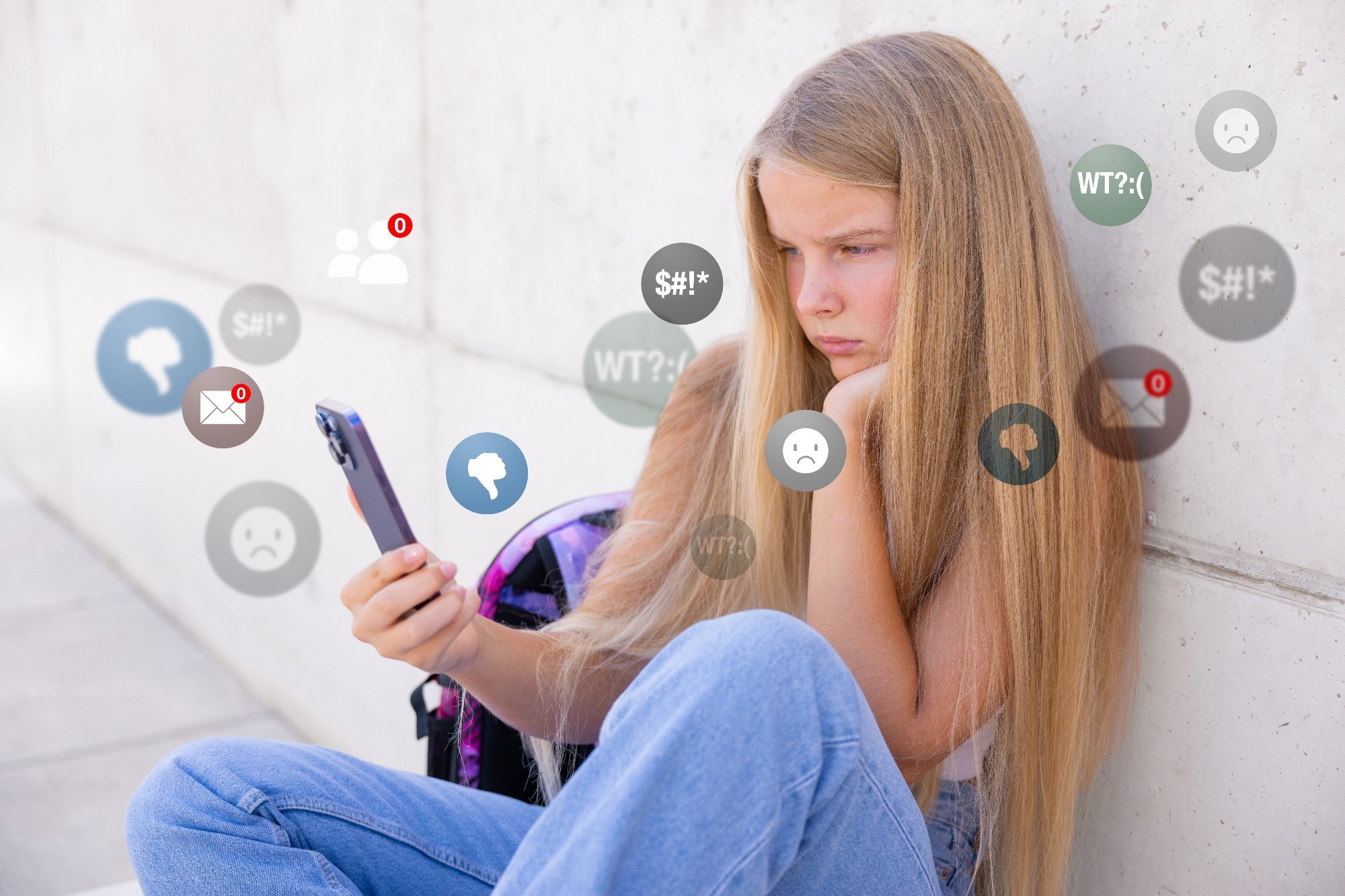In an article published in the journal Nature Reviews Psychology, researchers in Germany and the United Kingdom described the mechanisms through which social media might influence behavioral, cognitive, and neurobiological changes in adolescents, which in turn increases mental health vulnerability.
 Study: Mechanisms linking social media use to adolescent mental health vulnerability. Image Credit: Kaspars Grinvalds / Shutterstock
Study: Mechanisms linking social media use to adolescent mental health vulnerability. Image Credit: Kaspars Grinvalds / Shutterstock
Background
Adolescence is associated with many behavioral, cognitive, and neurobiological changes that help adolescents emerge from familial dependence and establish themselves as independent individuals in society.
These developmental changes can potentially increase the vulnerability of adolescents to various mental health conditions, including anxiety, depression, obsessive-compulsive disorder, eating disorders, and mood disorders.
The use of social media has increased exponentially among adolescents in recent years. Recent estimates indicate that 95% of 15-year-olds in the UK use social media, while 50% of 13-17-year-olds in the US report being virtually constantly online.
A growing pool of evidence indicates that social media can potentially influence developmental changes in adolescents and can put them in vulnerable positions to develop various mental health disorders.
Behavioral mechanisms linking social media use to adolescent's mental health
The authors have focused on two behavioral mechanisms that may influence social media's impact on adolescents' mental health.
Risky posting behavior
Adolescents are often engaged in more risky behaviors than adults because of uncontrolled sensation-seeking desires and lack of self-regulation abilities. The risk-taking behavior of adolescents is known to increase their risk of developing mental disorders, including anxiety, depression, and substance abuse.
Extreme social media posts, such as alcohol intake-related posts, get more likes from the audience, which in turn triggers more risky posting behaviors of users who expect more likes from their audience.
Studies investigating the relationship between risky online and offline behaviors find a positive association between adolescents' social media use and their engagement in behaviors that might expose them to harm or risk of injury.
Adolescents mostly underrate the risks of posting revealing information on social media. Such posts can be screenshotted and shared widely to diverse audiences, which subsequently can increase their risk of experiencing cyberbullying, online harassment, and victimization.
Self-presentation and identity
Adolescence is characterized by an abundance of self-presentation activities on social media. Adolescents frequently disclose, conceal, and modify their true selves on social media to convey a desired impression to the audience.
People receive more direct and public feedback on their self-presentation on social media than in offline environments, providing them with more opportunities to shape their identity. Existing studies have found an association between increased intensity of social media use and longitudinal decline in self-concept clarity.
Social media, on the other hand, can help adolescents disclose various aspects of their identity, such as race, ethnicity, and sexuality. Emerging evidence indicates that transgender people gain positive sentiments by revealing their identity on supportive social media platforms.
Cognitive mechanisms linking social media use to adolescent's mental health
The authors have focused on four cognitive mechanisms that may influence social media's impact on adolescents' mental health.
Self-concept development
Self-concept, defined as a person's beliefs and evaluations about their qualities and traits, can be influenced by socio-emotional processes such as self-appraisal and social feedback. A negative self-concept can increase the risk of adverse mental health conditions.
The facility of personalizing content can significantly increase social media's impact on self-concept development during adolescence. Adolescents who spend more time on social media have been found to develop negative self-evaluations.
Social comparison
Self-concept development can be influenced by social comparison, particularly during adolescence. Getting personalized content on a topic of interest can influence adolescents to compare themselves with the people portrayed in this content. Furthermore, the number of likes and reactions to self-presentation posts on social media can influence users' perceptions of social ranking.
Such social comparisons, especially body image-related comparisons, can negatively impact adolescents' mental health and can increase the risk of developing socio-emotional and eating disorders.
Social feedback
A heightened desire for socialization with peers and fear of social rejection are the two prominent characteristics in an adolescent's life. Existing evidence indicates that oversensitivity to social rejections is moderately associated with depression and anxiety.
Adolescents already experiencing peer victimization have been found to develop severe depressive symptoms because of not receiving as much online social approval as peers.
Social inclusion and exclusion
Social inclusion or social acceptance online has a protective effect against emotional disorders in adolescents. In contrast, online social exclusion is associated with low self-esteem and negative emotions.
Adolescents who do not receive desired attention or feedback from social media are more prone to develop a reduced sense of belonging, meaningfulness, self-esteem, and control.
Neurobiological mechanisms linking social media use to adolescent's mental health
Overall, this comprehensive research underlines social media's multidimensional impact on teenage mental health, not just through direct contact but also by exacerbating intrinsic developmental vulnerabilities during this crucial period. While social media offers unprecedented opportunities for self-expression and social connection, it also poses unique challenges due to adolescents' heightened sensitivity towards social feedback and the complex interplay of their rapidly evolving neurobiological, cognitive, and behavioral landscapes.
Future research must delve deeper into the nuanced ways social media interacts with developmental mechanisms to safeguard adolescent well-being in the digital age better. By focusing on the specific affordances of digital platforms and their potential to influence adolescent behavior and brain development, researchers can help formulate targeted interventions that reduce harm and enhance the positive aspects of social media use. These efforts require a collaborative approach among policymakers, educators, parents, and adolescents to develop strategies that recognize digital environments' profound influence on young minds.
Finally, as we negotiate this ever-changing digital landscape, it is critical to create an atmosphere where teenagers can thrive online and offline. Understanding the mechanisms on how social media affects mental health is only the first step toward reducing risks and increasing the resilience of future generations.